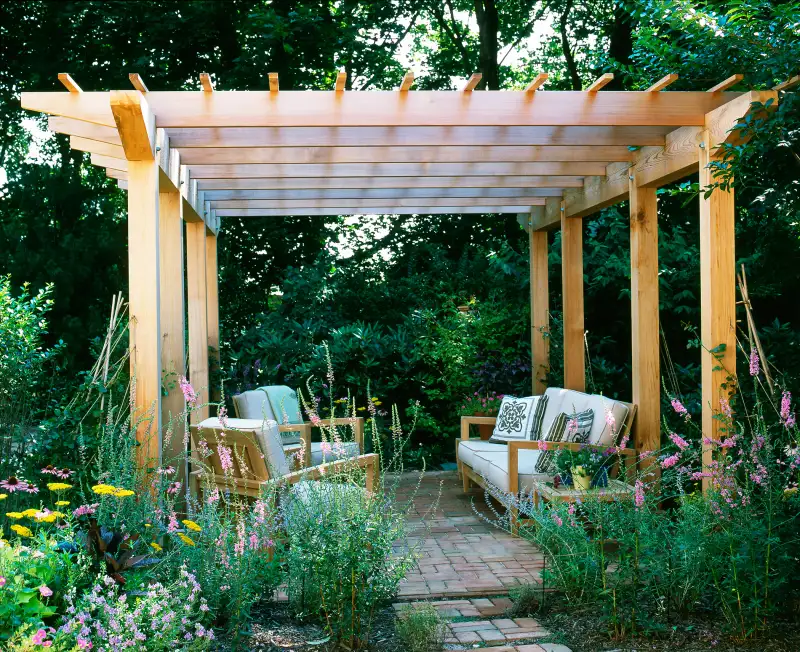5 Affordable Ways to Get Your Yard Looking Great

A high-end landscaping contractor will charge at least $5,000 to “remodel” a typical compact suburban front yard. But if you can handle a shovel, hose, and wheelbarrow, you have the physical skills to tackle the task yourself. The tricky part is getting the design right. Here’s how to achieve a lush, upscale look all on your own.
Broaden The Beds
A single-file row of plants along the foundation and the property lines looks generic at best. Widen the beds to four to six feet so there’s room for more flora, and to make the plants really pop, use mulch that’s the color of soil, says Newport, R.I., landscape architect Kate Field. That means the fine, dark, compost-like material that costs about 25% more than basic wood chips, or about $120 to $150 (for a small front yard), and that lasts only one year.
Focus on Foliage
Arrange shrubs and perennials two or three deep, with smaller plants placed in front of larger ones (check the mature size listed on the label). “Don’t get hung up on picking flowers,” says Portland, Ore., garden designer Darcy Daniels. Blooms are short-lived; it’s the foliage that you’ll see most of the time. Look for plants with red, purple, or multicolored leaves, as well as a variety of textures and shapes. You’ll pay $20 to $100 per plant, de- pending on type and size.
Do More With Less
A lot of do-it-yourself gardeners make the mistake of figuring more is better. They might buy as many different types of shrubs and perennials as their budget allows, and opt for a rainbow of bloom colors. But you’ll actually get a greater impact by buying three to five of each plant type you choose and then grouping them together in the yard, and by selecting just one or two bloom colors for the flowers. The garden will look intentional, sophisticated, and professional.
Accent the Architecture
Create a focal point using a dwarf tree or a large shrub. Don’t just plunk it in the middle of the yard. Instead, place it in line with a structural element of the property, such as a corner of the house, garage, or lot. Japanese maples ($100 to $400) and crepe myrtles ($35 to $140) are two good choices that look attractive in all seasons, says Severna Park, Md., nursery owner Gary Blondell.
Trim With Technique
When it comes to caring for your plants, ditch the electric clippers, which carve bushes into geometric shapes. “That look is passé,” says Field. Unless you’re trimming a hedge, always cut the branches to slightly varied lengths one by one using a hand tool, such as Felco’s Classic Pruner (about $50 at Amazon.com). You’ll get a more natural, flattering yard.
For more on money-smart home upgrades, check out The Money Guide to Home Improvements, available on newsstands June 12.
